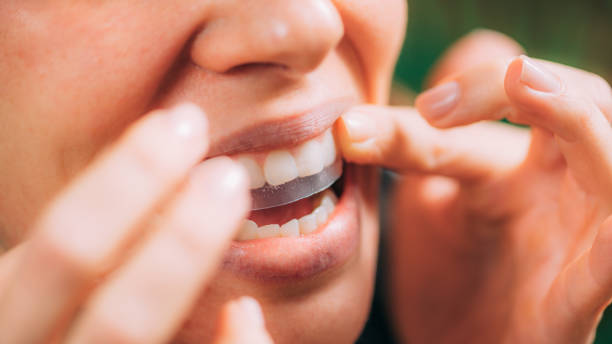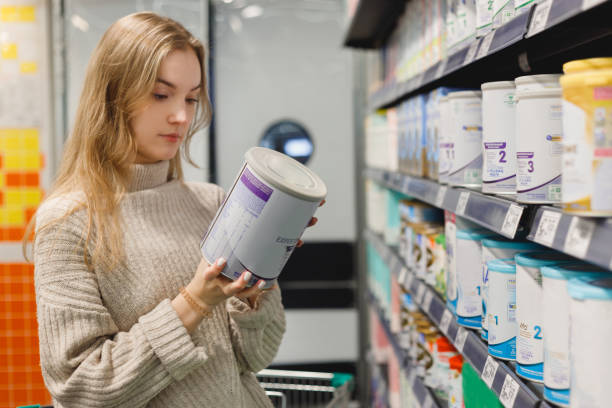One common dental product that may help whiten and remove stains from the teeth is whitening strips. They can be a simpler and less expensive option, even though they are not as effective as procedures from a dentist’s office. However, people should be cautious when using the strips and pay attention to the ingredients.
Read on to discover how teeth whitening strips function and which products are the most efficient.
What Are Teeth Whitening Strips?
The other primary (active) component of whitening gels is either hydrogen peroxide or carbamide peroxide. These are safe and efficient whitening agents that can be used in both professional and at-home treatments.
The ingredients in natural teeth-whitening strips don’t contain peroxide. For gradual and gentle stain removal, they employ botanicals and essential oils. Although safe, these products typically don’t work as well as peroxide treatments.
Do Teeth Whitening Strips Work?
Yes, teeth whitening strips are an effective way to whiten teeth, according to the American Dental Association (ADA).
The following products have received the American Dental Association (ADA) seal of acceptance:
• Crest 3D White Whitestrips (Glamorous White, Vivid White, Brilliance White)
• Crest 3D Whitestrips Classic Vivid
• Crest 3D Whitestrips Gentle (Sensitive White, Vivid White Gentle, Sensitive)
The only whitening strips that are safe and effective are not Crest whitening strips, despite the fact that the ADA has only approved these few products. You can use these products, though, with confidence.
How Do These Whitening Strips Work?
When you use whitening gel or strips, the process seems simple, which it is to some extent. The products contain hydrogen peroxide or carbamide peroxide. Both of these bleaches function similarly.
The active ingredient, hydrogen peroxide or carbamide peroxide, penetrates all the way through the tooth enamel to the dentin layer.
There are stains left behind, which the bleach later removes. By hiding stains, this instantly whitens teeth.
How to Use Teeth Whitening Strips?
Before using whitening strips, people should carefully read the product’s instructions and any information on the packaging.
However, the strips are typically placed directly on the teeth. Manufacturers might advise against brushing teeth right before using the strips. After that, one will wear the strips on their teeth as directed. The amount of time varies depending on the product, but it is typical to leave the strips on for around 30 minutes trusted Source.
The ideal usage frequency for whitening strips may also be suggested by the manufacturer. Applying whitening strips twice daily for two weeks is a common recommendation.
These guidelines, however, might change based on the product. In order to avoid wearing the strips longer than the manufacturer recommends, one should always adhere to the instructions on the packaging.

Side Effects of Whitening Strips
Yellow Or Gray Spots
It can be difficult to apply white strips. They won’t fit in the narrow spaces between your teeth or crevices. This might lead to uneven whitening effects. They can leave stained, uneven spots on your teeth if they are not applied perfectly.
Allergic Reaction
Although it’s uncommon, you might have an allergic reaction if you have a reaction to adhesives.
Tooth Damage
Your teeth’s enamel can be harmed by using whitening strips too frequently or for too long. This may result in more prone to tooth decay and cavities as well as sensitive teeth.
Tooth Sensitivity
A common side effect of whitening strips is sensitive teeth. Your teeth’s dentin may become visible if your enamel is damaged or stripped away. Due to this, teeth may become more sensitive to hot or cold foods and drinks.
Disruption of Your Oral Microbiome
The scientific term for the condition of your mouth is the oral microbiome. Numerous varieties of beneficial bacteria are necessary for guarding against cavities and other oral health issues. Additionally, the whitening gel’s peroxide kills bacteria. The health of your mouth may be harmed if an excessive amount of bacteria are eliminated. Numerous oral and systemic diseases may result from this.
Whitening Toothpaste & Mouthwashes
The outside of your teeth may be able to be cleaned with whitening toothpaste and mouthwash, but intrinsic stains are not cleaned. They may therefore lessen staining but they do not contribute to teeth whitening. They are much less effective than other teeth whitening products.7, 8
Products and DIY treatments containing charcoal, acidic fruits, or vinegar have not been shown to be effective at teeth whitening.7
Your teeth won’t noticeably whiten after using a whitening toothpaste, mouthwash, or home remedies.
Professional In-Office Whitening Treatment
Another secure and efficient method to achieve a whiter smile is professional teeth whitening at a dental office. Dental professionals employ a wide variety of procedures. Ask your neighborhood dentist what procedures they use.
The results of professional teeth whitening are comparable to those of at-home LED and strip whitening. But compared to the other two methods, it is much more expensive.
Takeaway
Teeth whitening strips have the capacity to lighten your teeth by one or two shades. Results may become apparent as soon as a few days after treatment.
The best application for at-home teeth whitening products is to cover up minor tooth discoloration. You might want to visit your dentist for an in-office cleaning if you have significant staining on your teeth.
Consult your dentist before using any teeth-whitening products, and make sure the product bears the American Dental Association (ADA) Seal of Acceptance.



